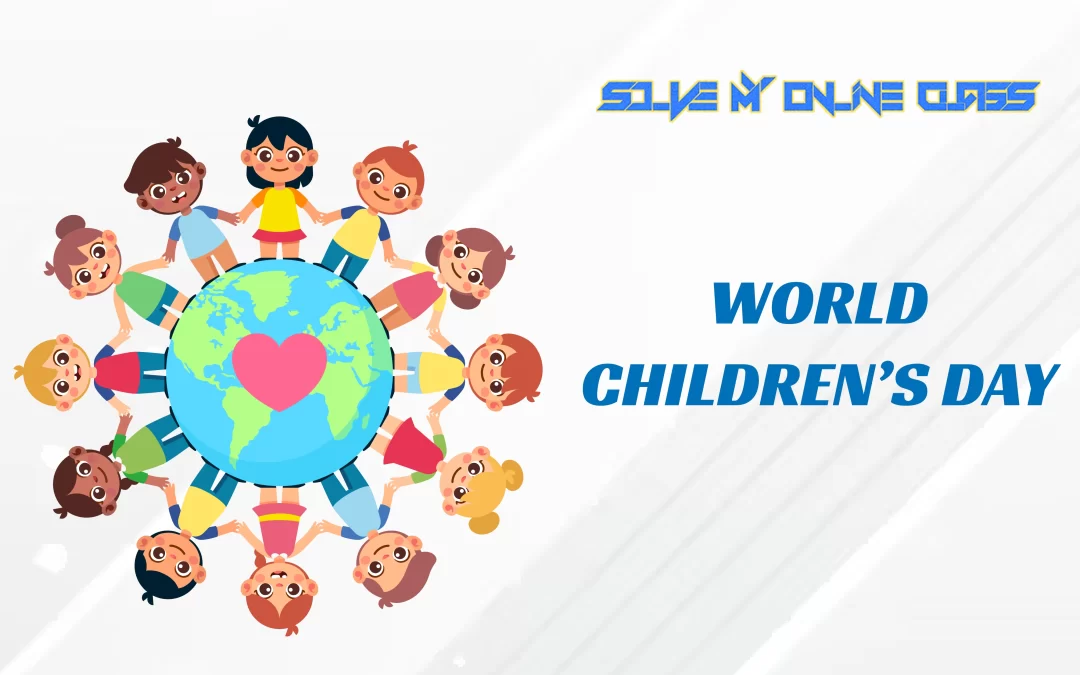Introduction:
Every year on November 20th, the world observes World Children’s Day, a day to celebrate and advocate for children’s rights, welfare, and special contributions to society. Today is the anniversary of the Convention on the Rights of the Child’s adoption, which was established by the UN General Assembly in 1954. It acts as a reminder of the continuous work required to guarantee the life, development, safety, and involvement of every kid. We will discuss the significance of World Children’s Day, its historical origins, and the opportunities and difficulties that face children today all throughout the world in this blog.
Ancestral History:
The inception of World Children’s Day dates back to the post-World War II era, when the global world realized how important it was to put children’s welfare first. The United Nations International Children’s Emergency Fund (UNICEF) was founded in 1946 as a result of the war’s terrible effects on millions of children. In order to give children in war-torn areas emergency food and medical attention, UNICEF was essential.
The General Assembly called for international understanding and brotherhood among children in 1954 and suggested that all nations observe a Universal Children’s Day. This concept developed throughout time, leading to the November 20, 1989, approval of the Convention on the Rights of the Child. This historic international agreement establishes children’s civil, political, economic, social, and cultural rights and offers a thorough framework for their upbringing and safety.
What World Children’s Day Means:
Advancement of Children’s Rights: The significance of respecting the rights delineated in the Convention on the Rights of the Child is underscored on World Children’s Day. These rights consist of the freedom from exploitation, healthcare, education, and the right to be heard. The day provides a forum for advocating for children’s rights to be upheld and protected as well as for increasing awareness of the difficulties that children confront on a worldwide scale.
Honoring Diversity: World Children’s Day honors the variety of origins, cultures, and languages that contribute to the richness of the world community. Children are our planet’s future. It fosters a world where variety is embraced and appreciated by encouraging youngsters to feel united and understanding.
Showcasing the World’s Challenges:
World Children’s Day is a chance to raise awareness of the urgent problems that impact children all around the world. Poverty, poor access to healthcare and education, violence, and exploitation are some of these issues. By drawing attention to these problems, the global society may endeavor to discover long-term fixes that will guarantee every youngster has a brighter future.
Modern Difficulties:
Child Poverty: Although there has been progress in many areas, there is still a big problem with child poverty. Across the world, millions of children lack access to basic essentials like food, clean water, and a place to live. In order to address the underlying causes of poverty and provide opportunity for children to thrive, World Children’s Day encourages everyone to take action together.
Education Disparities: Despite advancements in expanding educational opportunities, inequalities still exist. Many children confront obstacles that prevent them from accessing high-quality education, especially in developing nations. These obstacles include conflicts, gender inequity, and a lack of infrastructure. The world children’s day movement promotes fair and inclusive education for all.
Child Health: As preventable diseases, malnutrition, and a lack of access to quality healthcare are major concerns, World Children’s Day aims to draw attention to these issues. Ensuring children have access to healthcare services is essential for their physical and emotional wellbeing.
Violence and Exploitation: In both tranquil communities and war areas, millions of children are subjected to violence, exploitation, and abuse. On World Children’s Day, there is a demand for more efforts to safeguard children’s safety and mental health by shielding them from all sorts of violence.
Possibilities for Improvement:
Investment in Education: Increasing funding for education is a major way to bring about positive change. Governments and organizations may empower children with the knowledge and skills necessary to break the cycle of poverty and make valuable contributions to the development of their communities by placing a high priority on education.
Enhancing the availability of healthcare services is crucial in guaranteeing the welfare of children. We can improve the quality of life for children and lower the number of avoidable illnesses and deaths by making investments in healthcare infrastructure, preventive measures, and addressing inequities.
Child-Friendly Policies: Developing and putting into practice child-friendly policies is a major responsibility of governments and legislators. The rights, safety, and welfare of children should come first in these policies. Children’s voices can be heard and appreciated in society if they are actively involved in the decision-making process.
International Cooperation: World Children’s Day reminds us that children face issues that are universal and need for international cooperation. In order to effectively address the different needs of children worldwide, it is imperative that governments and non-governmental organizations form partnerships, cooperate internationally, and actively involve communities.
Conclusion:
World Children’s Day is evidence of our shared dedication to creating an environment in which all children can develop, learn, and flourish. Even with ongoing obstacles, there are plenty of opportunities to make positive changes. Through advocating for children’s rights, tackling inequalities, and cultivating international cooperation, we can build a future in which every kid can realize their full potential. Let us reaffirm our commitment to building a world that values and nurtures the promise of tomorrow as we commemorate World Children’s Day.






